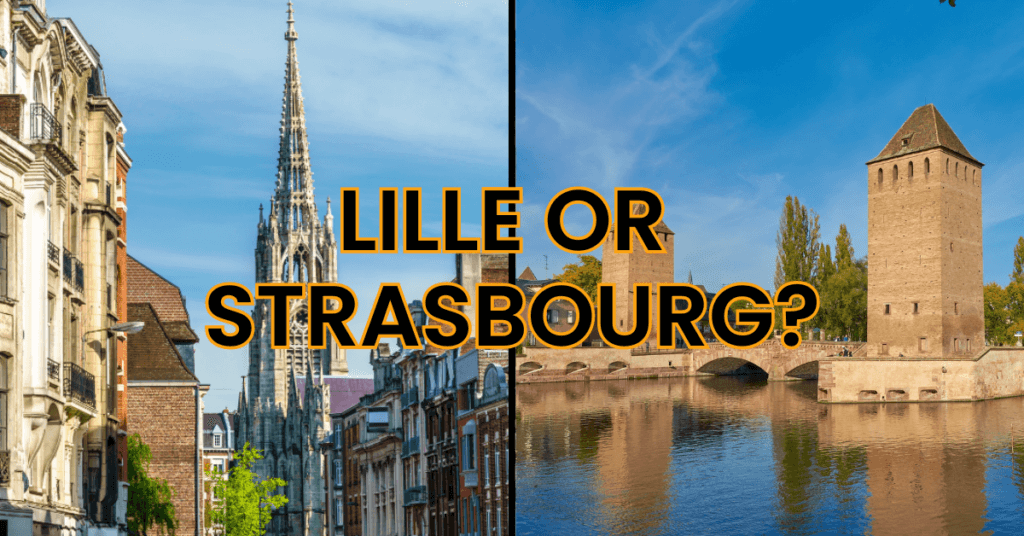Lille or Strasbourg? Which city should you visit?
Choosing between Lille or Strasbourg can be quite the decision. Each city has a unique set of offerings that cater to different interests. Let’s take a closer look at what sets them apart, so you can decide which city might be best for your next trip.
🏛 History Buffs: Strasbourg’s well-preserved medieval past, especially the stunning Strasbourg Catherdral and picturesque “La Petite France” neighbourhood is guaranteed to be a hit with the history nerds. Lille’s French, Flemish and Spanish influences make it an interesting destination. Alongside the nearby battlefields of WW1 it’s definitely a good destination if you’re into history. Is it better than Strasbourg? That all depends on what history you’re interested in.
🏖 Beach Lovers: If you’re looking for a beach holiday neither of these landlocked cities are for you.
🥐 Foodies: Strasbourg, the capital of the Alsace region, is a haven for food lovers with its unique Alsatian cuisine. A mixture of French and German cuisines, the food here is hearty and rich, much like the cuisine in Lille. We’re leaning towards Strasbourg, but only slightly.
🌳 Nature Enthusiasts: Strasbourg’s proximity to the Black Forest and Vosges Mountains make it the clear winner here. Lille doesn’t have any areas that compete with these two famous areas.
🏢 Urban Explorers: For those into culture, Strasbourg is a win with its blend of French and German heritage visible in its traditional buildings and local customs. The city is home to the impressive Gothic cathedral and the charming ‘Petite France’ area. Lille has its perks with a strong art scene and bustling city life, but for a deep dive into a city where culture is around every corner, Strasbourg stands out.
🍷 Wine Lovers: Whilst Lille might have an incredible beer scene. Strasbourg is the go-to destination for wine lovers here. Close the the Alsace wine region, the wines here are fantastic and very underrated.
🎒 Backpackers: Lille’s energetic, youthful vibe makes it a great destination for backpackers. With easy access to Paris, Brussel and Amsterdam, it’s a great stop off on a bigger European tour. Strasbourg may be full of culture and history but we feel Lille is the better destination for younger travellers.
👵 Over 60’s: Strasbourg’s relaxed feel, scenic canals and beautiful “La Petite France” make it an incredible destination for the over 60’s. Lille might feel a bit lively for the older generations.
👨👩👦 Family-Friendly: Lille is a better destination for families 90% of the year. But, if you’re planning on travelling around Christmas, Strasbourg should jump to the top of your list. The Christmas markets here are so good Strasbourg has been named the capital of Christmas!
Conclusion: If you’re after a fun, youthful cities with a great art scene and a unique history, make your way to Lille. But, if you want to step back in time and enjoy some incredible food and wine, or you’re planning a Christmas trip. Head to Strasbourg.
Still not sure? Continue reading for a more thorough comparison of these two amazing cities.
Lille
Nestled near the border with Belgium, Lille has a unique charm that’s all its own. This vibrant city blends French and Flemish influences, creating an ambiance that’s distinct yet welcoming. The old town, Vieux Lille, enchants visitors with its narrow cobbled streets and colourful old houses.
But it’s not just about the past here. Lille is also a young city, thanks to its large student population, and this brings a dynamic, energetic feel to the place. Whether you’re exploring the bustling markets, diving into the lively arts scene, or just relaxing in a cosy café, Lille has something for everyone. It’s a city that knows how to live well and invites you to share in that.
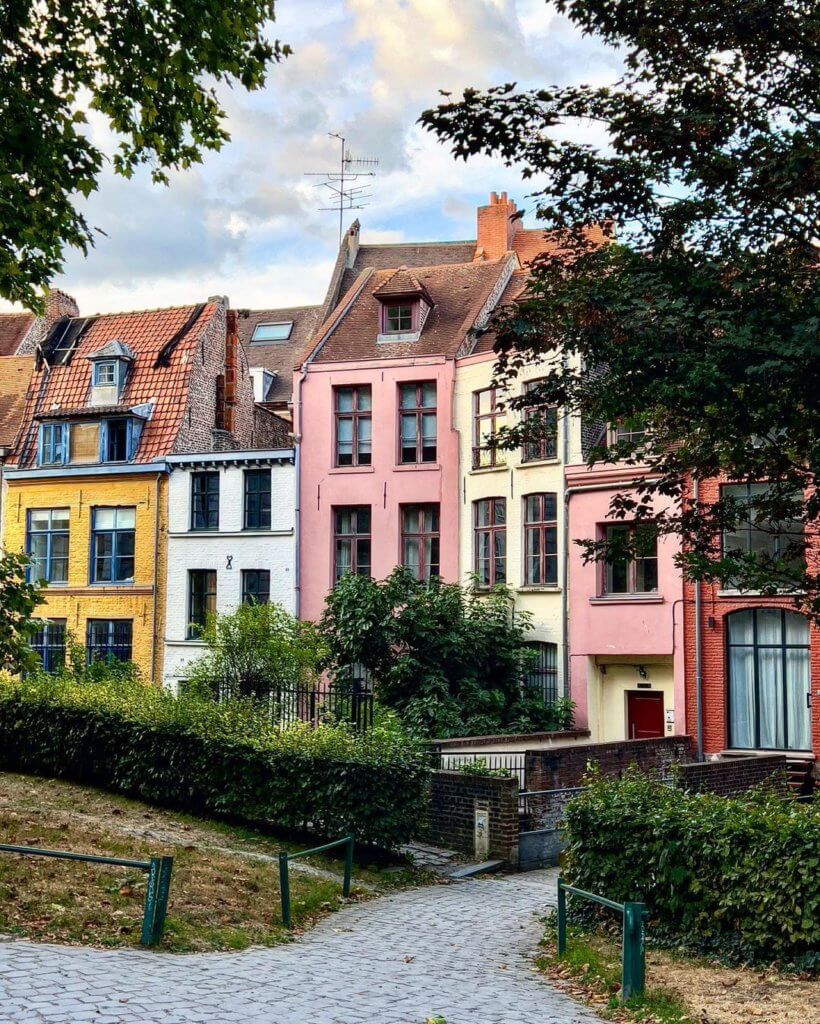
Strasbourg
Strasbourg, a city that straddles the border of France and Germany, offers an interesting fusion of cultures that’s definitely worth exploring. Its historic centre, known Grande Île, is a UNESCO world heritage site and is filled with beautiful cobblestone streets and half timbered houses. But Strasbourg isn’t just about visiting the past. It’s a dynamic city brimming with a unique culture. With plenty of museums, a great art scene and bustling local markets this is a city that caters to most travellers. Plus, the local cuisine is an interesting blend of French sophistication and hearty German food! If you’re looking for a somewhat different destination for your next holiday, Strasbourg should definitely be added to your list!
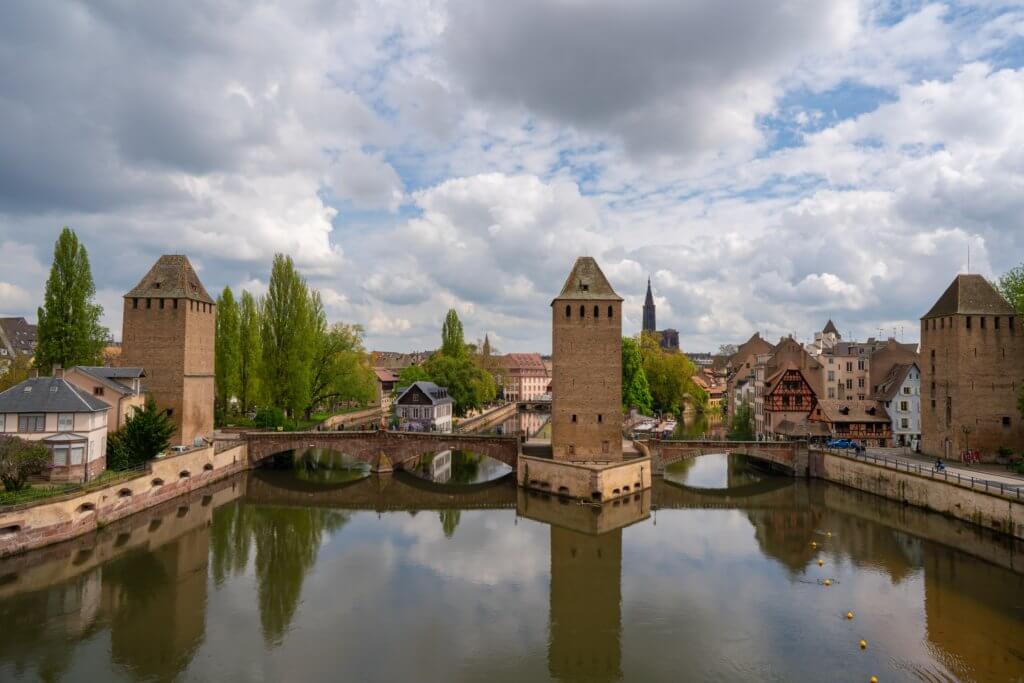
While we’re comparing Lille and Strasbourg in this post, we’ve also looked at how Lille stacks up against other cities like Nantes and Biarritz. We’ve linked to those articles below if you want to take a look!
Pros and Cons of Lille and Strasbourg
Lille Pros:
- 🎨 Cultural Hub: Boasts a vibrant mix of art galleries, theatres, and cultural events.
- 🚆 Transport Connectivity: Exceptional rail links, including Eurostar services to London and Thalys to Brussels and Amsterdam.
- 🛍 Shopping Diversity: Offers a delightful shopping experience with a mix of traditional and modern outlets.
- 🏰 Flemish Architecture: The city’s old town is renowned for its charming Flemish-style architecture.
- 🍽 Culinary Blend: A unique combination of French and Flemish cuisines.
- 🎓 Student Life: The city’s universities contribute to a dynamic and youthful atmosphere.
- 🎉 Festive Spirit: Known for hosting various cultural and music festivals.
Lille Cons:
- 🌧 Weather: Often overcast with a higher likelihood of rain, typical of the region.
- 🌃 Nightlife: More subdued compared to larger French cities.
- 🏞 Geographical Diversity: Lacks the scenic variety found in other parts of France.
- 🌍 International Fame: Less globally recognised than some other French cities.
- 🏭 Industrial Past: Some areas reflect its industrial heritage.
Strasbourg Pros:
- 🇪🇺 European Significance: Home to several important European institutions, including the European Parliament.
- 🏰 Architectural Marvels: Famous for its picturesque old town and stunning Gothic cathedral.
- 🎄 Christmas Market: Hosts one of the oldest and most famous Christmas markets in Europe.
- 🚲 Bike-Friendly: Known for being exceptionally bike-friendly with extensive cycling paths.
- 🍷 Wine Region: Located near Alsace’s renowned wine regions.
- 🌉 Cross-Border Charm: Unique blend of French and German cultures, enhancing its culinary and cultural diversity.
- 🌿 Green Spaces: Abundant parks and green areas.
Strasbourg Cons:
- 🌦 Climate: Experiences a somewhat variable climate, with cold winters and warm summers.
- 🌆 Tourist Crowds: Can get crowded, especially during peak seasons like the Christmas market.
- 🚗 Traffic: City centre can experience traffic congestion, especially during peak hours.
- 🏙 Modern vs. Old: Some find the contrast between the modern outskirts and the historic center striking.
- 📈 Cost of Living: Relatively high, particularly in the city centre and surrounding areas.
Which City is Safer? Lille or Strasbourg?
Lille, with its bustling urban atmosphere, presents a crime index of around 46.50, placing it in a moderate category in terms of safety. The majority of the crimes reported in Lille are related to theft and petty offenses, particularly in busier areas and around transport hubs. Visitors should exercise standard caution, especially in less frequented neighborhoods or during night hours. The city’s main attractions and tourist-friendly zones, however, are generally considered safe, and visitors are unlikely to face significant issues.
Strasbourg, known for its beautiful streets and rich cultural heritage, has a crime index of about 40.42, indicating a relatively lower rate of crime. Most reported incidents in Strasbourg revolve around minor crimes such as pickpocketing, especially in crowded tourist areas and public transport. The city maintains a tranquil charm, with serious crimes being rare in central areas frequented by tourists. It is always advisable, though, to remain vigilant, particularly during late hours and in less populated districts, to ensure a safe and enjoyable visit.
How long to stay in Lille
For a short trip, 2-3 days in Lille should give you enough time to see the main sights. You can explore the charming old town, visit a museum or two, and enjoy some local food. This is a good option if you’re on a tight schedule or if you’re visiting Lille as part of a larger trip.
If you have a bit more time, a week in Lille allows you to experience the city more fully. You can take your time exploring the city’s different neighbourhoods, visit more museums, and even take day trips to nearby cities like Bruges or Ghent.
So, whether you’re planning a quick visit or a longer stay, Lille has plenty to offer. But remember, the best trip length for you will depend on your personal interests and how much time you have available.
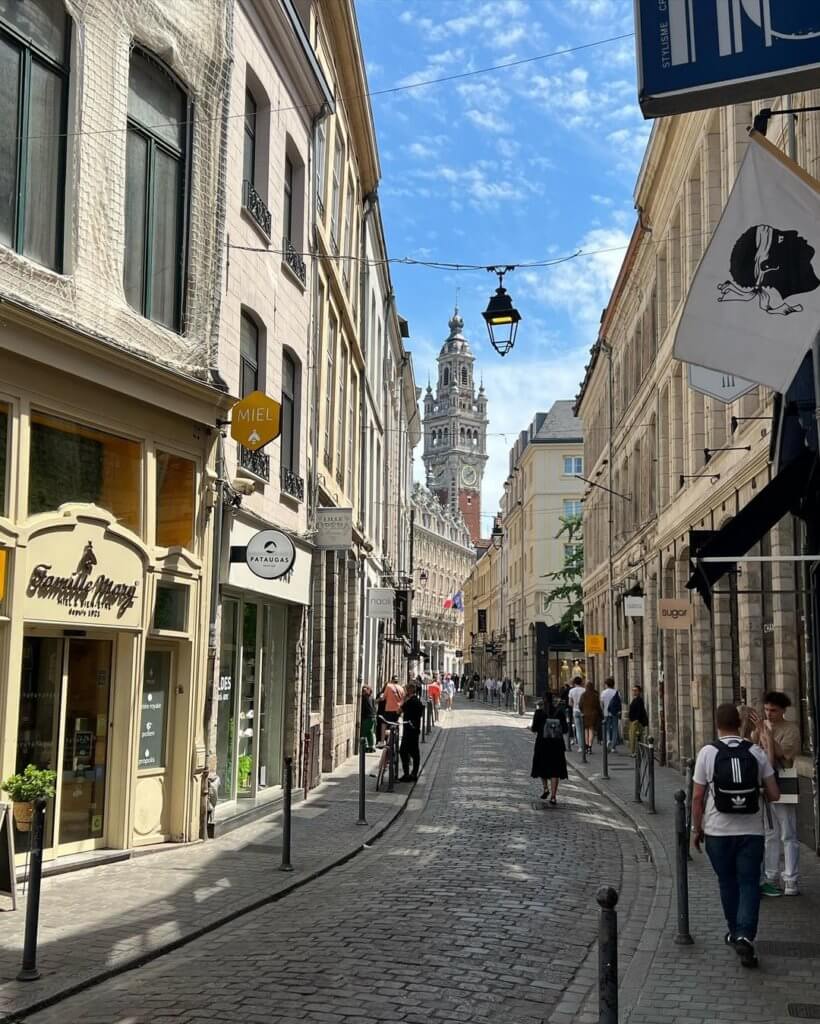
How long to stay in Strasbourg
Choosing the ideal duration for a trip to Strasbourg can be a bit of a challenge, given the city’s blend of German and French culture, its rich history, and captivating architecture. The length of your stay ultimately depends on your individual interests and the pace at which you wish to explore.
If your plan is to experience the city’s main attractions, wander through the charming La Petite France district, and taste the region’s mouth-watering dishes like ‘choucroute’ or ‘tarte flambée’, a stay of 2 to 3 days would be ample. This will provide enough time to marvel at the majestic Strasbourg Cathedral, get lost in the quaint, cobblestone streets, and savour the unique gastronomy that Strasbourg offers.
However, if you’re aiming to immerse yourself deeper into Strasbourg’s fascinating history and culture, consider extending your stay to 4 to 5 days. This will afford you the chance to explore the various museums and galleries, such as the Alsatian Museum or the Museum of Modern and Contemporary Art, visit the European Parliament, and take leisurely strolls along the scenic canals, all at a relaxed pace.
For those wanting to truly absorb the Alsatian lifestyle, spending a week in Strasbourg can be a fantastic option. This duration not only provides enough time to thoroughly explore the city’s nooks and crannies but also allows for relaxing café visits and day trips to nearby gems like the charming town of Colmar or the stunning Haut-Koenigsbourg Castle. A week in Strasbourg enables you to fully appreciate the unique blend of cultures and the relaxed pace of life in this beautiful city.
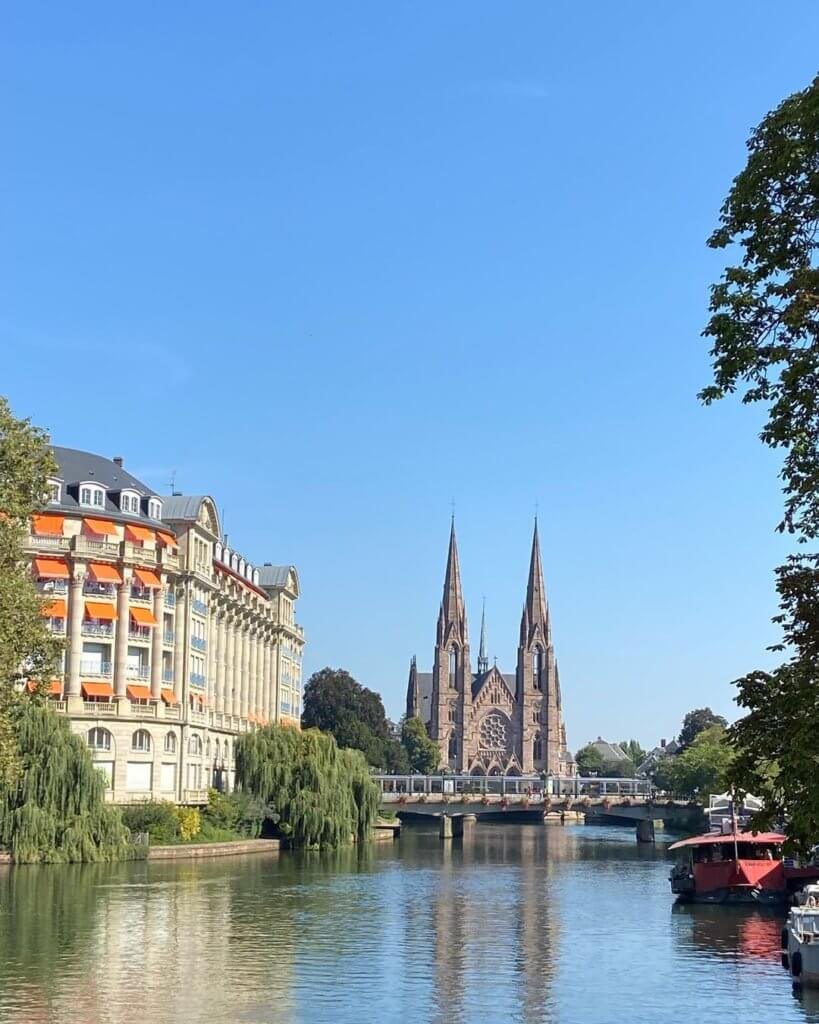
How much is food and drink in Lille and Strasbourg?
How much is it to stay in Lille or Strasbourg?
| Accommodation Type | Lille (€ per night) | Strasbourg (€ per night) |
|---|---|---|
| Luxury Hotel | €150 – €500+ | €150 – €500+ |
| Midrange Hotel | €70 – €150 | €70 – €150 |
| Budget Hotel | €40 – €70 | €40 – €70 |
| Hostel | €20 – €40 | €20 – €40 |
When is the best time to visit Lille?
🌼 Spring (March to May) is a time when the city begins to revive after winter. The temperatures are mild, and the city’s parks and gardens are blossoming. This is a great time to visit if you enjoy outdoor activities and want to avoid the summer crowds.
☀️ Summers (June to August) in Lille are warm and lively, perfect for exploring the city’s charming old town and its vibrant markets. The city is bustling with festivals like the Lille Braderie, a huge flea market event and a unique cultural experience.
🍁 Autumn (September to November) in Lille brings mild weather and changing colours, turning the city into a vibrant palette. The falling leaves in the city parks create a beautiful spectacle, making it an ideal time for photographers.
❄️ Winter (December to February) in Lille is fairly chilly, but it’s also when the city turns into a festive wonderland. The Christmas market lights up the city, and while it might be cold, the magical atmosphere more than makes up for it.
When is the best time to visit Strasbourg?
🌼 Spring (March to May) in Strasbourg is a delightful period, with comfortable temperatures and the cityscape coming alive with blooming flowers. This is an excellent time to explore the picturesque streets of Petite France or take a leisurely boat ride along the Ill River.
☀️ Summers (June to August) in Strasbourg are warm, ideal for outdoor exploration of the city’s rich historical sites and the stunning Parc de l’Orangerie. This season also coincides with several festivals such as the Strasbourg Summer Festival and the Longevity Music Festival, adding an extra layer of excitement for visitors.
🍁 Autumn (September to November) is a special time in Strasbourg, being a part of the Alsace wine region, it marks the period of grape harvest and wine-making. This season allows visitors to witness the wine-making process and taste some of the finest wines. The weather during this period remains pleasant, and the changing hues of the vine leaves create a stunning backdrop.
❄️ Winter (December to February) in Strasbourg is truly enchanting. The city is famed for hosting one of the oldest Christmas Markets in Europe, turning the city into a twinkling fairytale land. While it can be quite cold, the festive spirit and fewer tourists make it a unique time to visit.
Average Monthly Temperatures
Getting around Lille is a breeze thanks to its efficient public transport system, which includes buses, trams, and a metro. The Lille Metro is particularly notable as it was the world’s first fully automated light rail network. For shorter distances, walking or cycling is quite feasible as Lille is a compact city with many pedestrianized areas. There’s also a bike-sharing program known as V’Lille. If you plan on exploring the wider region, trains from Lille’s stations offer quick connections to other major cities in France and Belgium.
Lille is easy to get around due to its buses, trams and metro system. City passes are a good way to save money if you plan on making the most of public transport. Lille’s city centre is quite compact so it’s very walkable. You could hire a bike too if you wanted.
Getting around Strasbourg:
Strasbourg boasts an efficient public transportation system, primarily made up of trams and buses, operated by the Compagnie des Transports Strasbourgeois (CTS). The city’s tram network is one of the most extensive in France, connecting various parts of the city and making it easy to move around.
The ‘Strasbourg à Vélo’ bike-sharing scheme is an excellent option for those preferring a more active way to explore the city. The city is bicycle-friendly with numerous dedicated bike lanes and routes, making it a delight to navigate on two wheels.
Walking is another wonderful way to experience Strasbourg, especially within the Grande Île, which is a UNESCO World Heritage site and contains many of the city’s historic attractions.
Taxis and ride-hailing services like Uber are also readily available, but fares may be higher during peak tourist seasons or during rush hours. Be sure to check rates before your journey.
Top things to do in Lille
- Visit the Palais des Beaux-Arts: As the second-largest general interest museum in France, the Palais des Beaux-Arts in Lille houses an impressive collection of paintings, sculptures, and drawings from the likes of Rubens, Van Dyck, and Delacroix.
- Stroll around the Vieux Lille: The old town of Lille, with its cobblestone streets, beautiful old houses, and chic boutiques, is perfect for leisurely walks. Take time to enjoy the area’s charm, and don’t forget to try a Merveilleux, a local pastry.
- Explore the LaM: Standing for Lille Métropole Museum of Modern, Contemporary and Outsider Art, the LaM holds over 4,000 works including pieces by Picasso, Modigliani, and Miro. Its beautiful park is also a must-see.
- Take a walk through the Citadel: Designed by Louis XIV’s engineer Vauban, the Citadel is a star-shaped fortress. The surrounding park, Bois de Boulogne, is a great place for a picnic or a jog.
- Visit the Wazemmes Market: This is one of the largest markets in France and a must-visit spot in Lille. From fresh produce to clothing, you’ll find almost everything here. Try to catch it on Sunday when it’s at its liveliest.
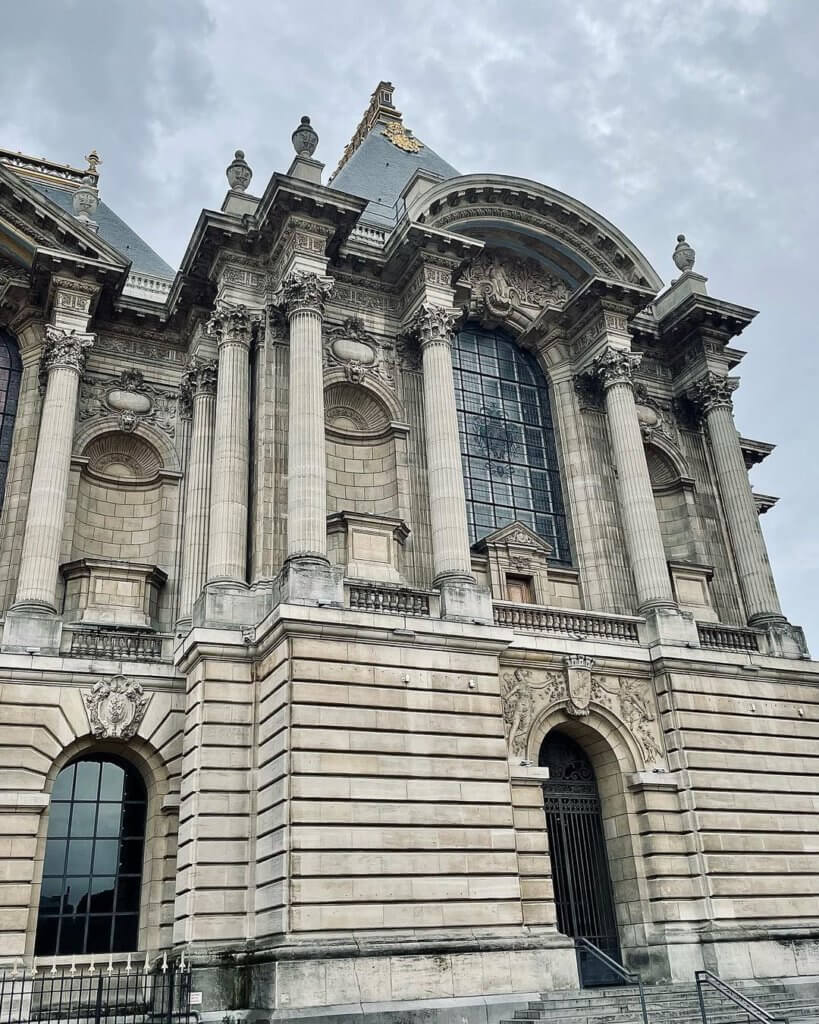
Top things to do in Strasbourg
- Strasbourg Cathedral: The Strasbourg Cathedral, also known as Notre Dame Cathedral, is a stunning masterpiece of Gothic architecture. Its astronomical clock is an engineering marvel that shouldn’t be missed. Climb to the top for panoramic views of Strasbourg and the surrounding region.
- Petite France: This is the city’s most picturesque district, filled with half-timbered houses, quaint canals, and narrow streets. Petite France is a UNESCO World Heritage site and truly is the essence of Strasbourg’s charm.
- European Parliament: Strasbourg is home to the European Parliament, one of the main institutions of the European Union. When in session, you can take a guided tour of the Hemicycle – the parliamentary assembly room.
- Boat Tour: A boat tour on the Ill River is a perfect way to appreciate the city’s mix of French and German architecture, as well as the beautiful nature that surrounds it.
- Parc de l’Orangerie: A visit to this lovely park makes for a relaxing break from sightseeing. Here, you can find a small zoo, a boating lake, and beautifully landscaped gardens.
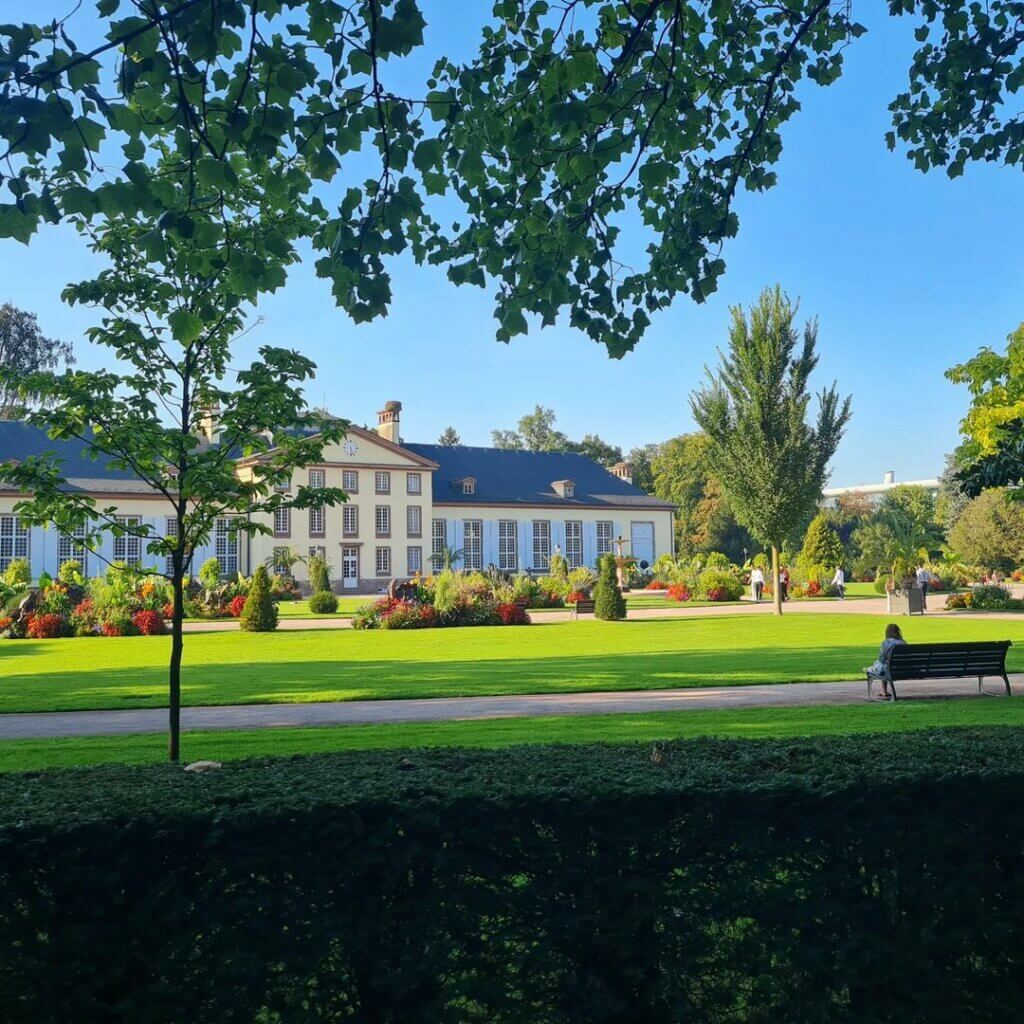
How to spend three days in Lille
Day 1: Get Acquainted with Lille and Its Historic Heart
Begin your Lille adventure by meandering through the streets of Vieux Lille, the city’s old quarter. Marvel at the charming Flemish architecture, visit the imposing Lille Cathedral, and indulge in some retail therapy at upscale boutiques. After lunch, head over to the Grand Place, the city’s main square, where you can admire historic buildings like the Vieille Bourse. Cap off your day with a delicious meal at one of the local French or Flemish restaurants in the area.
Day 2: Dive into Lille’s Cultural Treasures and Parks
Start your second day by visiting some of Lille’s renowned museums. Explore the Palais des Beaux-Arts to see masterpieces from Goya, Rubens, and other great artists. Post-lunch, take a leisurely stroll or have a picnic at the Citadel Park, home to the impressive 17th-century Citadel. In the evening, venture back to Vieux Lille for dinner, opting for a cosy bistro for its delightful atmosphere.
Day 3: Embrace the Local Atmosphere and Farewell Meal
On your final day, immerse yourself in the local vibe at Wazemmes Market in the morning. Here you can sample local delicacies and pick up fresh produce. Consider a picnic lunch at the beautiful Jardin des Plantes, one of the city’s lovely green spaces. In the afternoon, pay a visit to the Maison Natale de Charles de Gaulle, the birthplace of the former French president. To wrap up your Lille trip, enjoy a farewell dinner at a restaurant serving traditional Northern French cuisine.
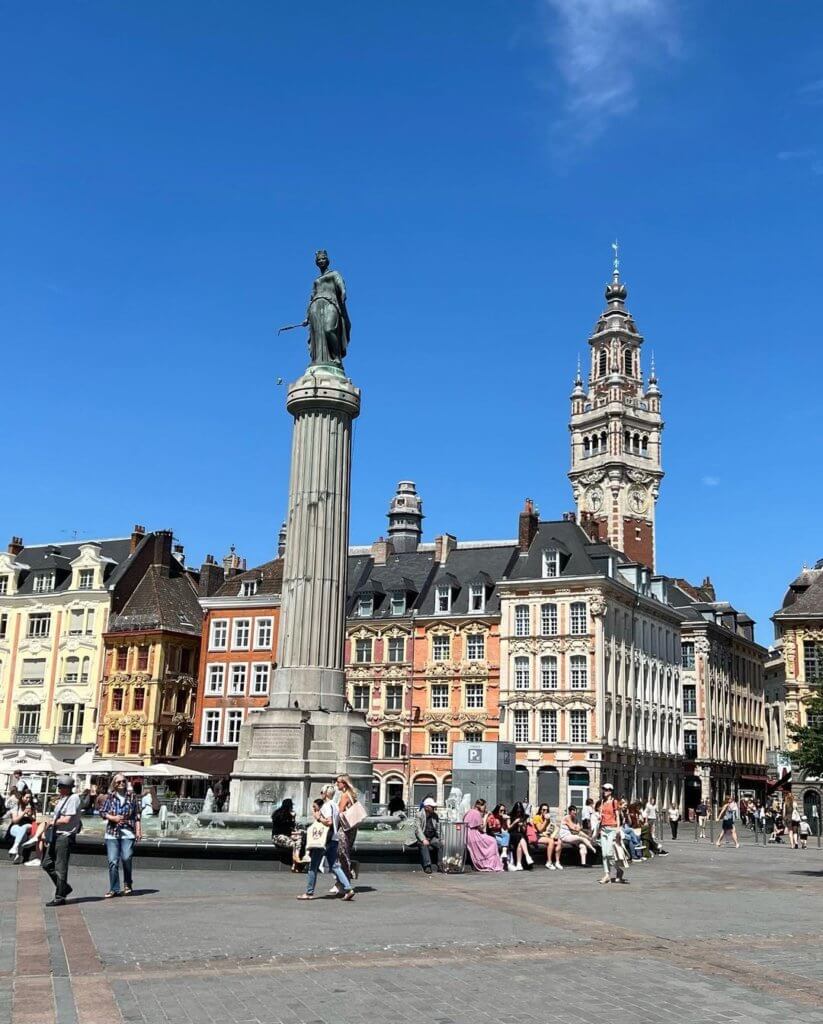
How to spend three days in Strasbourg
Day 1: Exploring Strasbourg’s Historic Core
Begin your first day in Strasbourg by visiting the impressive Strasbourg Cathedral. Climb up the tower for a stunning panorama of the city. Once you’ve marvelled at the cathedral’s Gothic splendour, take a leisurely stroll through the charming district of Petite France, with its beautiful half-timbered houses and picturesque canals.
For lunch, savour a local delicacy like Tarte Flambée at one of the traditional Alsatian winstubs (wine lounges) in the area. Spend your afternoon exploring the museums around the city center such as the Alsatian Museum or the Fine Arts Museum.
As the day draws to a close, enjoy a river cruise on the Ill for a unique perspective on Strasbourg’s beautiful architecture.
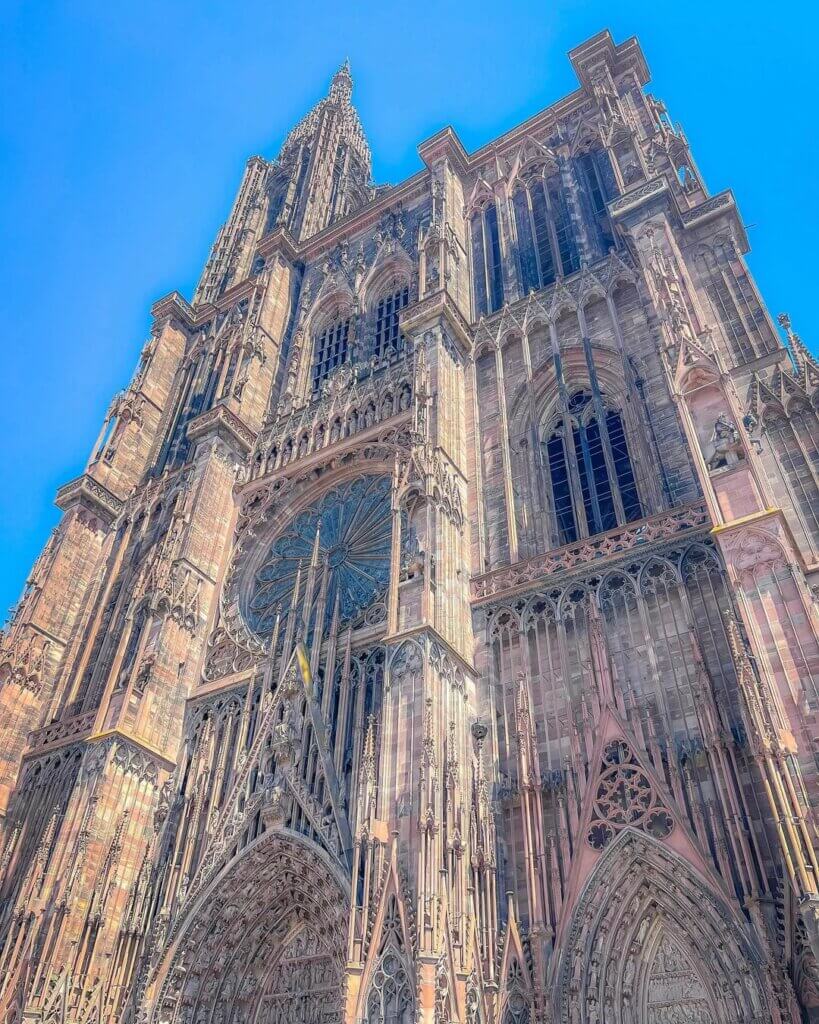
Day 2: A Day at the European Institutions
Start your second day with a visit to the European Parliament. Take a guided tour of the Hemicycle and learn about the workings of the EU. From there, head to the nearby European Court of Human Rights and the Council of Europe, which are also part of the European Quarter.
In the afternoon, relax in the Parc de l’Orangerie. Take a peaceful boat ride on the lake, visit the small zoo, or just enjoy a leisurely stroll in the gardens.
Day 3: Exploring the Surrounding Region
On your final day, embark on a day trip to one of the nearby attractions. The Haut-Koenigsbourg Castle, about an hour’s drive from Strasbourg, offers stunning views of the Alsace region. Alternatively, the city of Colmar, with its charming old town and the famous Unterlinden Museum, is also worth a visit.
Back in Strasbourg, conclude your visit with a farewell dinner at one of the city’s excellent restaurants, perhaps trying another Alsatian speciality, such as Coq au Riesling or Choucroute Garnie.
Gareth is an avid city adventurer with a particular passion for finding amazing food! There’s quite literally nothing he doesn’t like. He spends most of his travelling time trying to find great restaurants and cafes to eat at. Alongside trying local street food which he loves! He’s done most of his travelling in Europe so far but would love to visit Japan and Mexico
When not travelling you can find Gareth boxing, running, or in the gym. He’s got a passion for exercise and loves physical challenges.
You can contact him at gareth@thecityadventurers.com

